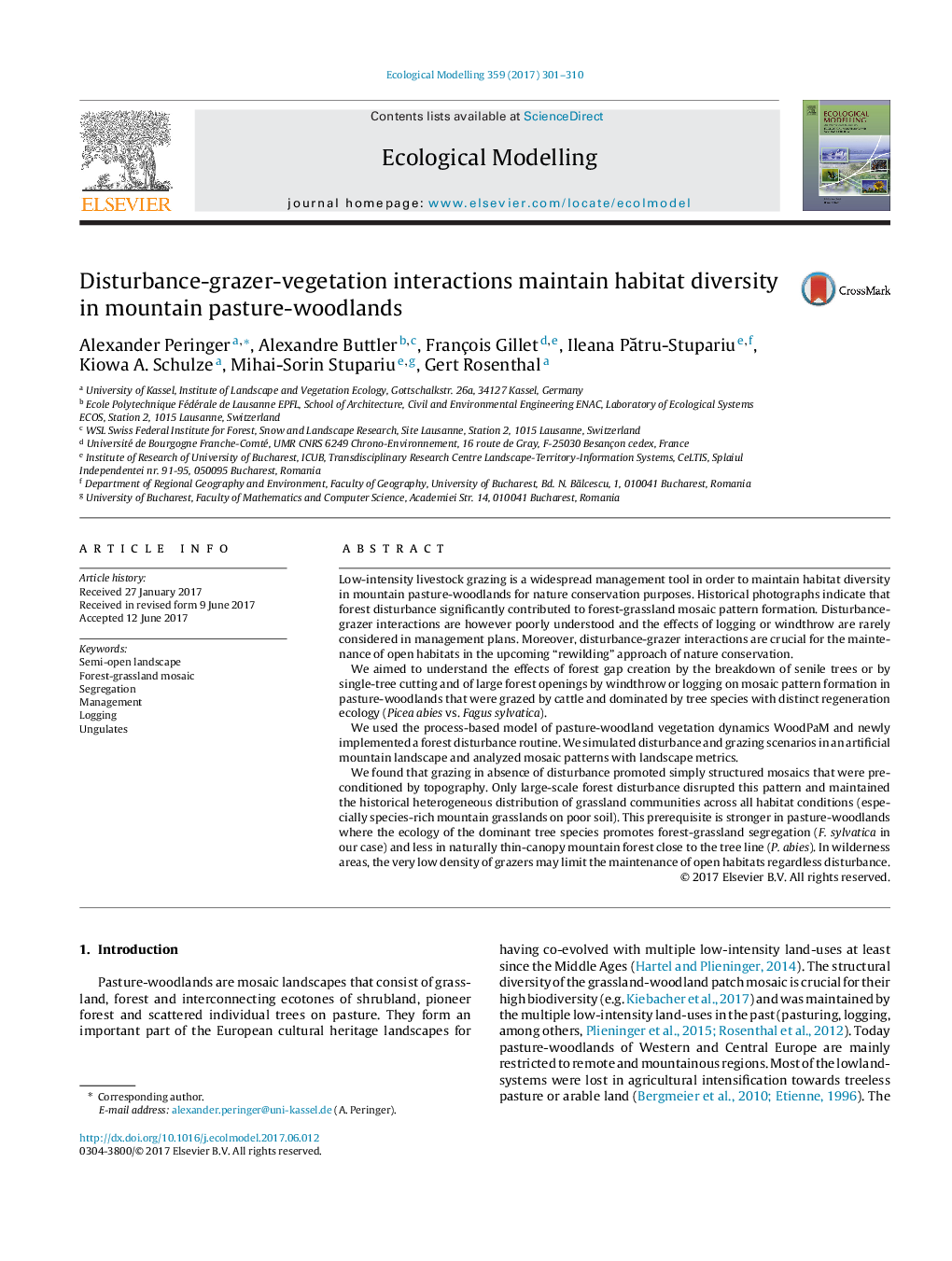| کد مقاله | کد نشریه | سال انتشار | مقاله انگلیسی | نسخه تمام متن |
|---|---|---|---|---|
| 5742142 | 1617388 | 2017 | 10 صفحه PDF | دانلود رایگان |
- Historic landscape structural diversity is not conserved by grazing alone.
- Management should allow, if not include large-scale forest disturbance.
- Small-scale disturbance creates patchy forest-grassland ecotones at local scale.
- Large-scale disturbance disrupts forest-grassland segregation.
Low-intensity livestock grazing is a widespread management tool in order to maintain habitat diversity in mountain pasture-woodlands for nature conservation purposes. Historical photographs indicate that forest disturbance significantly contributed to forest-grassland mosaic pattern formation. Disturbance-grazer interactions are however poorly understood and the effects of logging or windthrow are rarely considered in management plans. Moreover, disturbance-grazer interactions are crucial for the maintenance of open habitats in the upcoming “rewilding” approach of nature conservation.We aimed to understand the effects of forest gap creation by the breakdown of senile trees or by single-tree cutting and of large forest openings by windthrow or logging on mosaic pattern formation in pasture-woodlands that were grazed by cattle and dominated by tree species with distinct regeneration ecology (Picea abies vs. Fagus sylvatica).We used the process-based model of pasture-woodland vegetation dynamics WoodPaM and newly implemented a forest disturbance routine. We simulated disturbance and grazing scenarios in an artificial mountain landscape and analyzed mosaic patterns with landscape metrics.We found that grazing in absence of disturbance promoted simply structured mosaics that were preconditioned by topography. Only large-scale forest disturbance disrupted this pattern and maintained the historical heterogeneous distribution of grassland communities across all habitat conditions (especially species-rich mountain grasslands on poor soil). This prerequisite is stronger in pasture-woodlands where the ecology of the dominant tree species promotes forest-grassland segregation (F. sylvatica in our case) and less in naturally thin-canopy mountain forest close to the tree line (P. abies). In wilderness areas, the very low density of grazers may limit the maintenance of open habitats regardless disturbance.
157
Journal: Ecological Modelling - Volume 359, 10 September 2017, Pages 301-310
